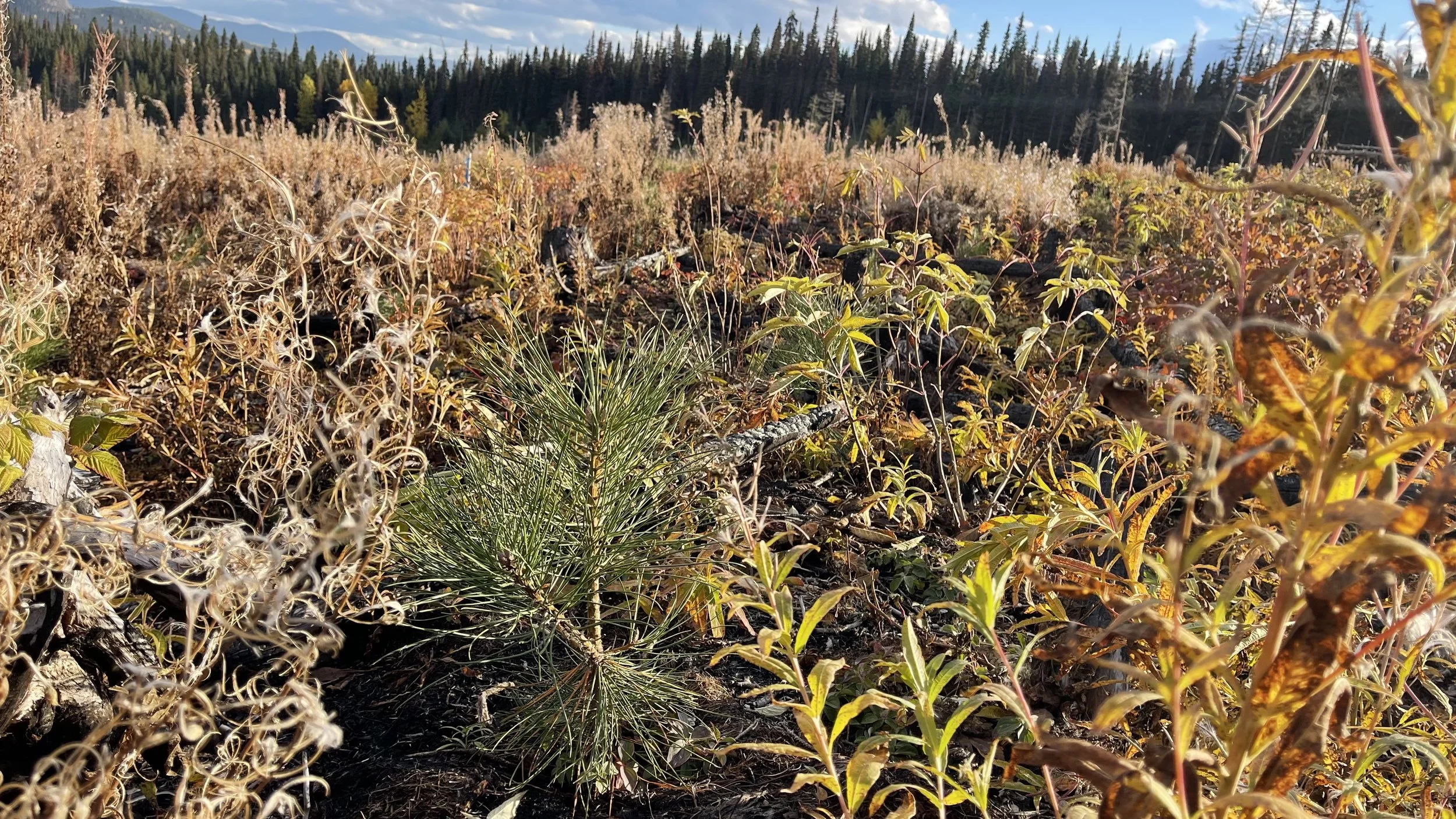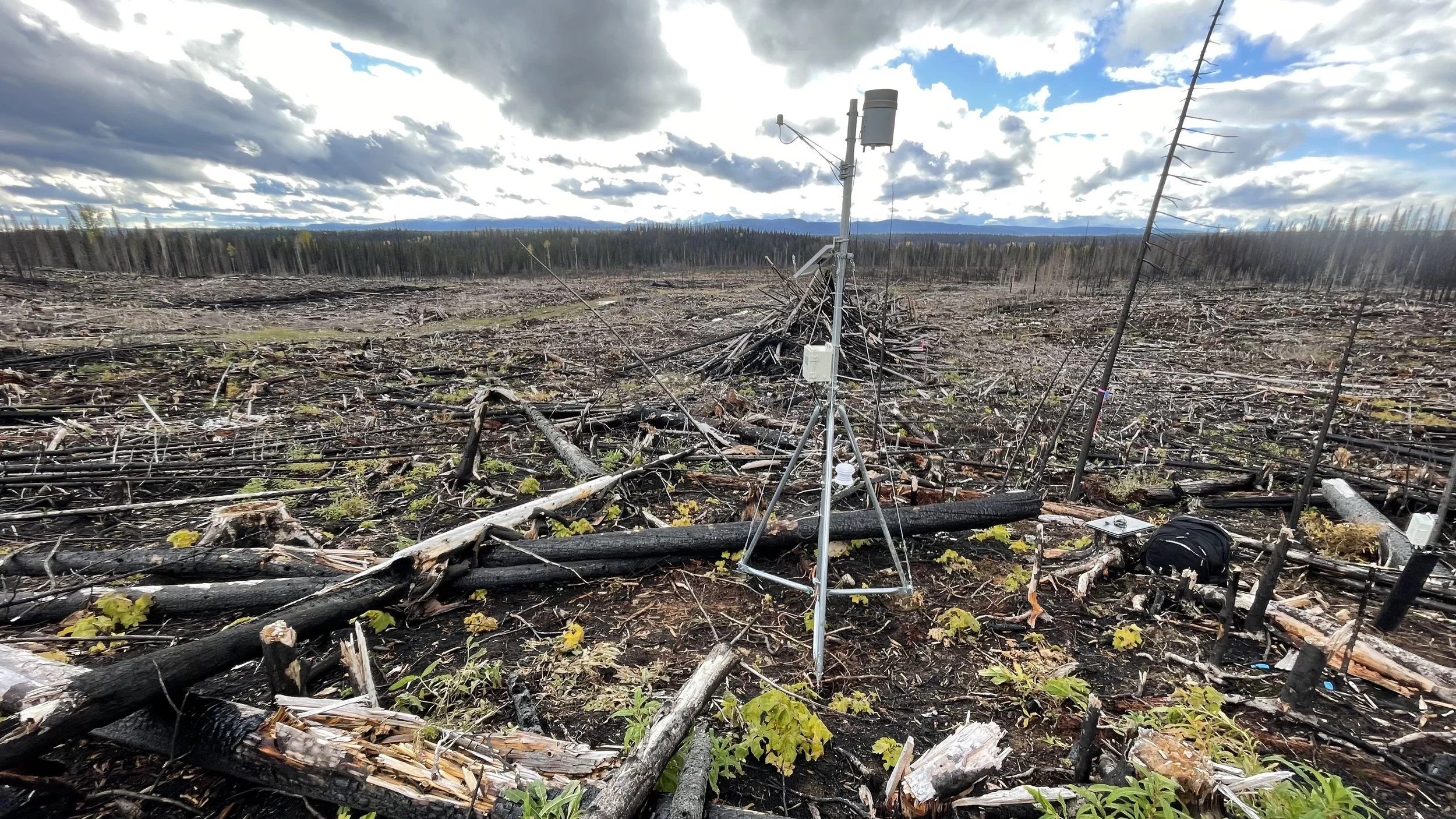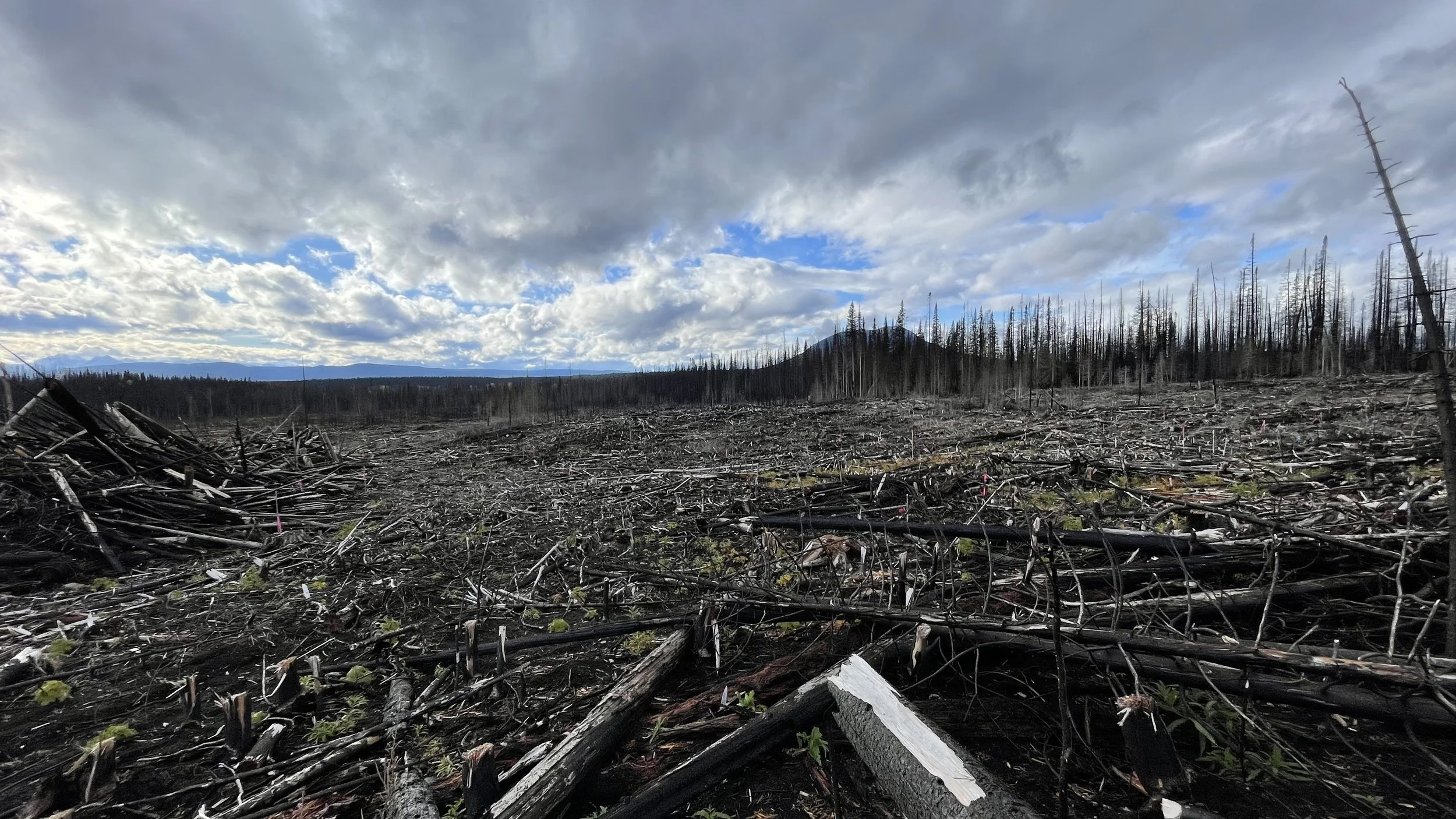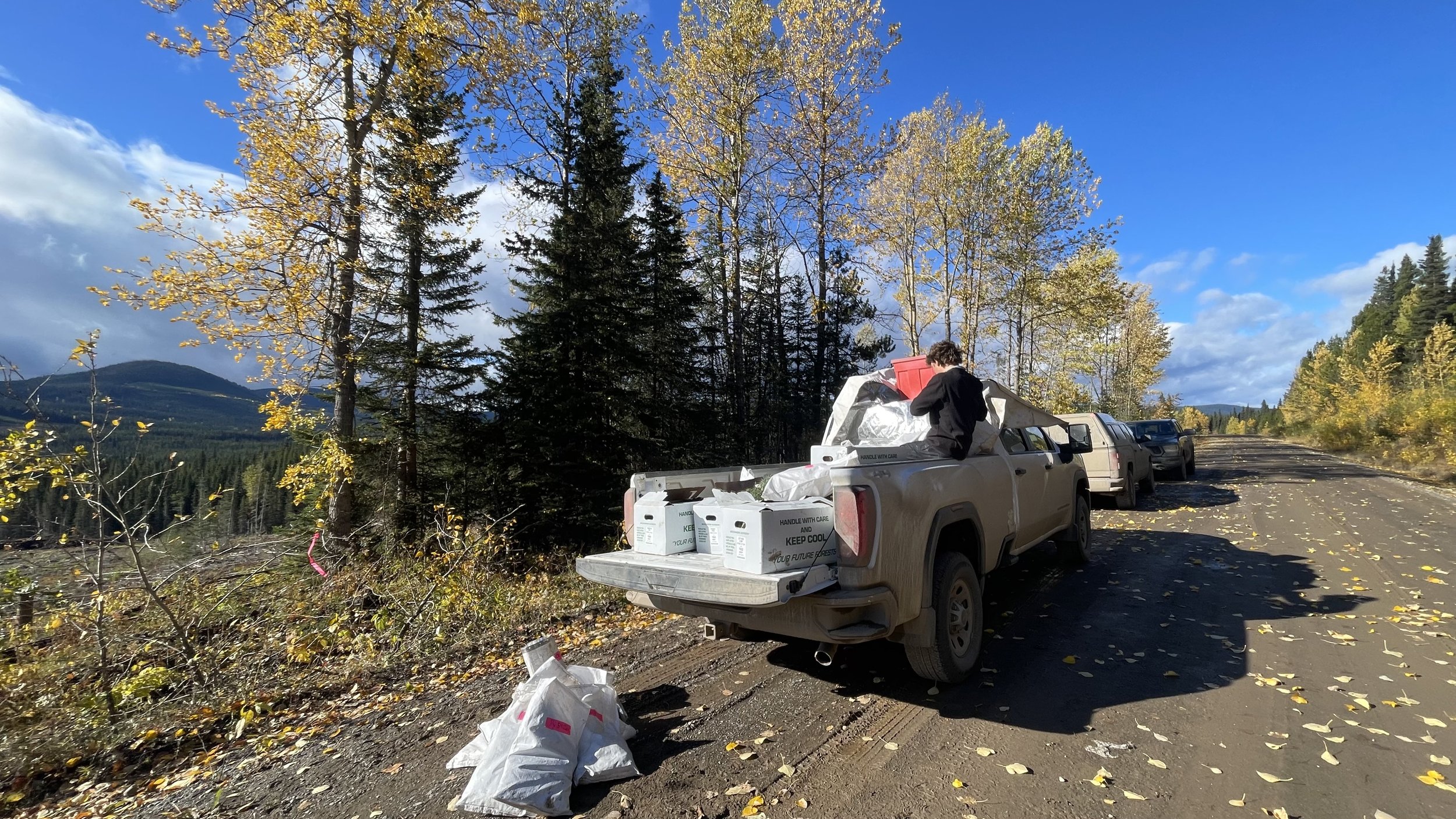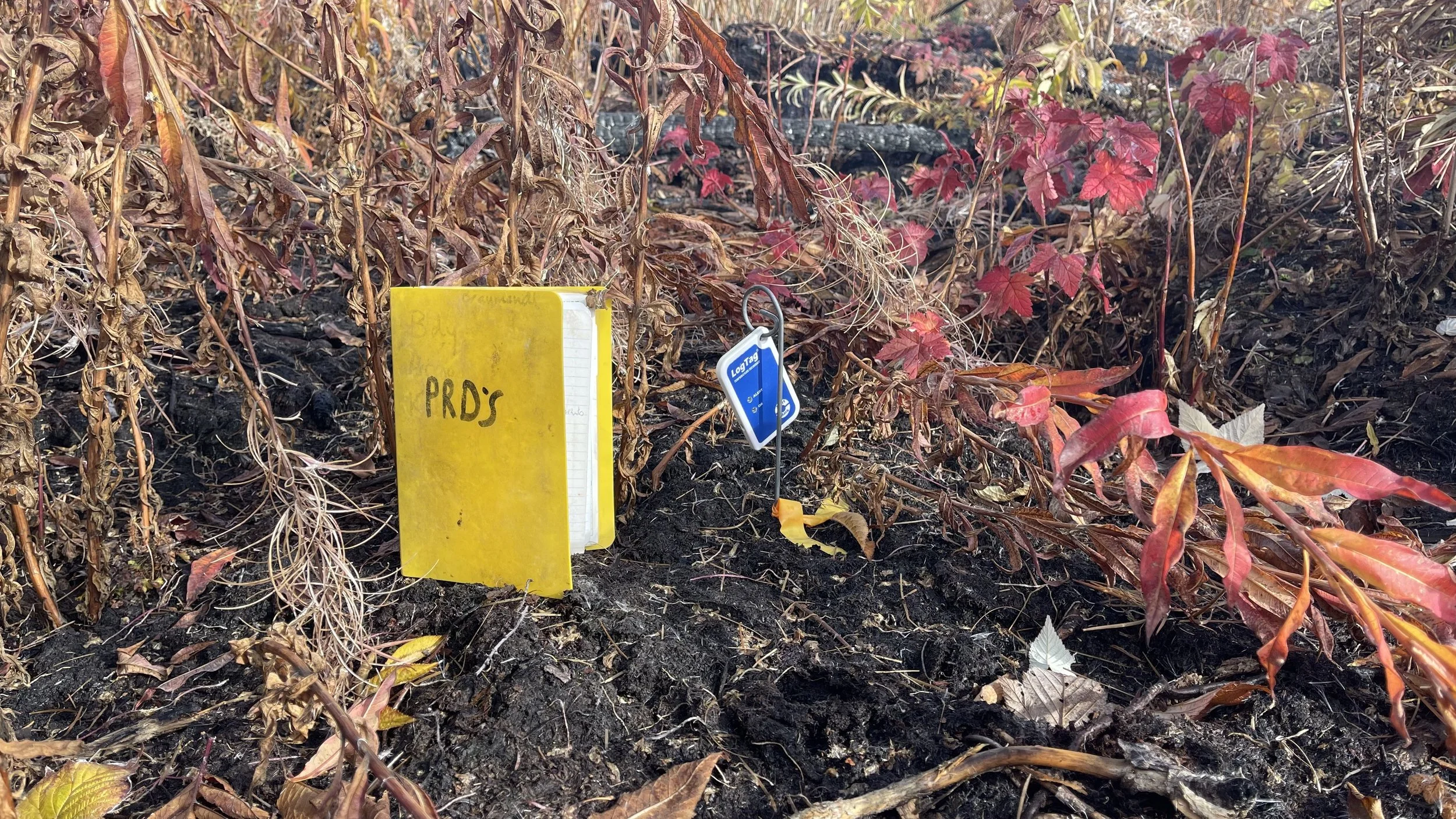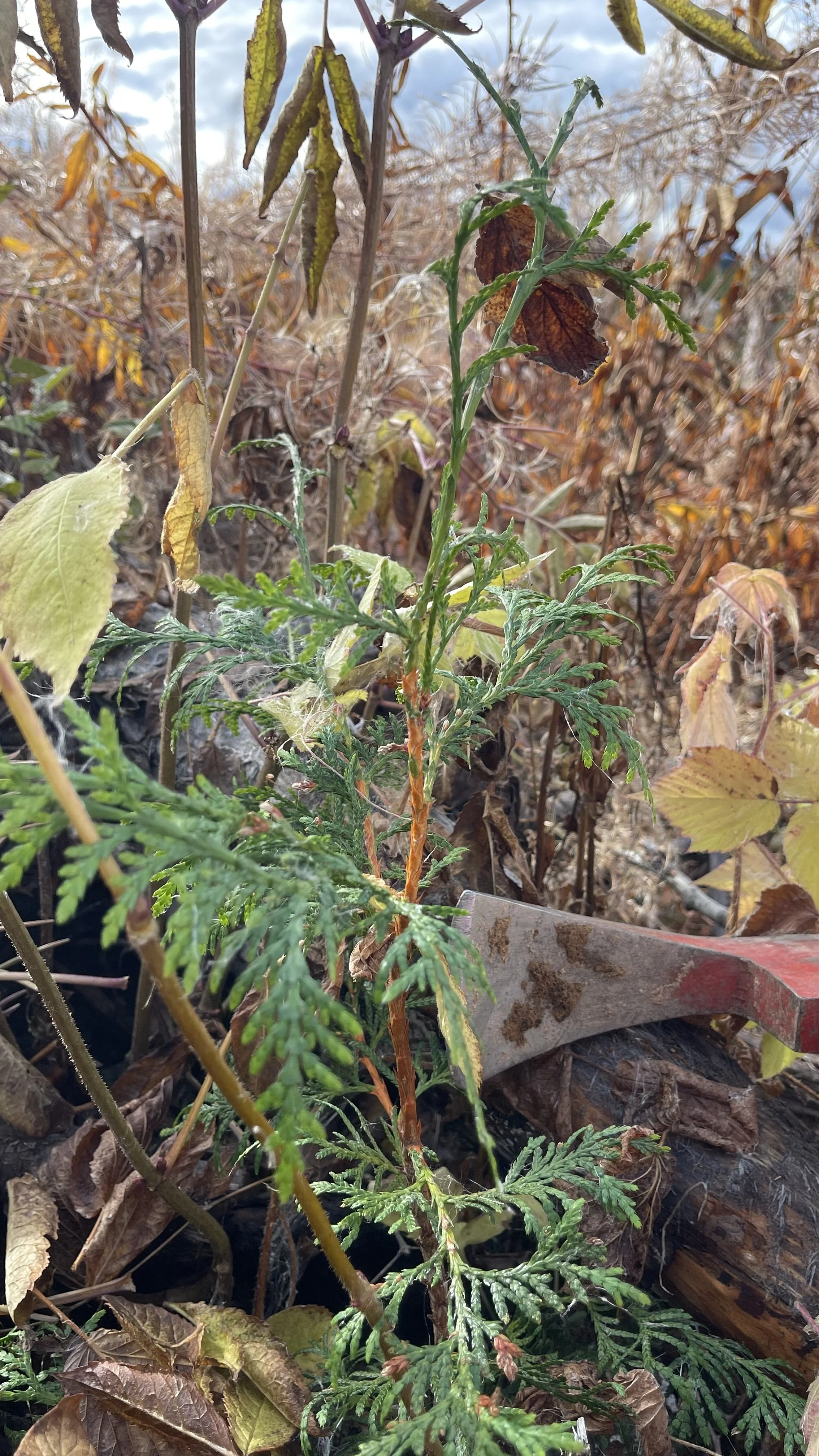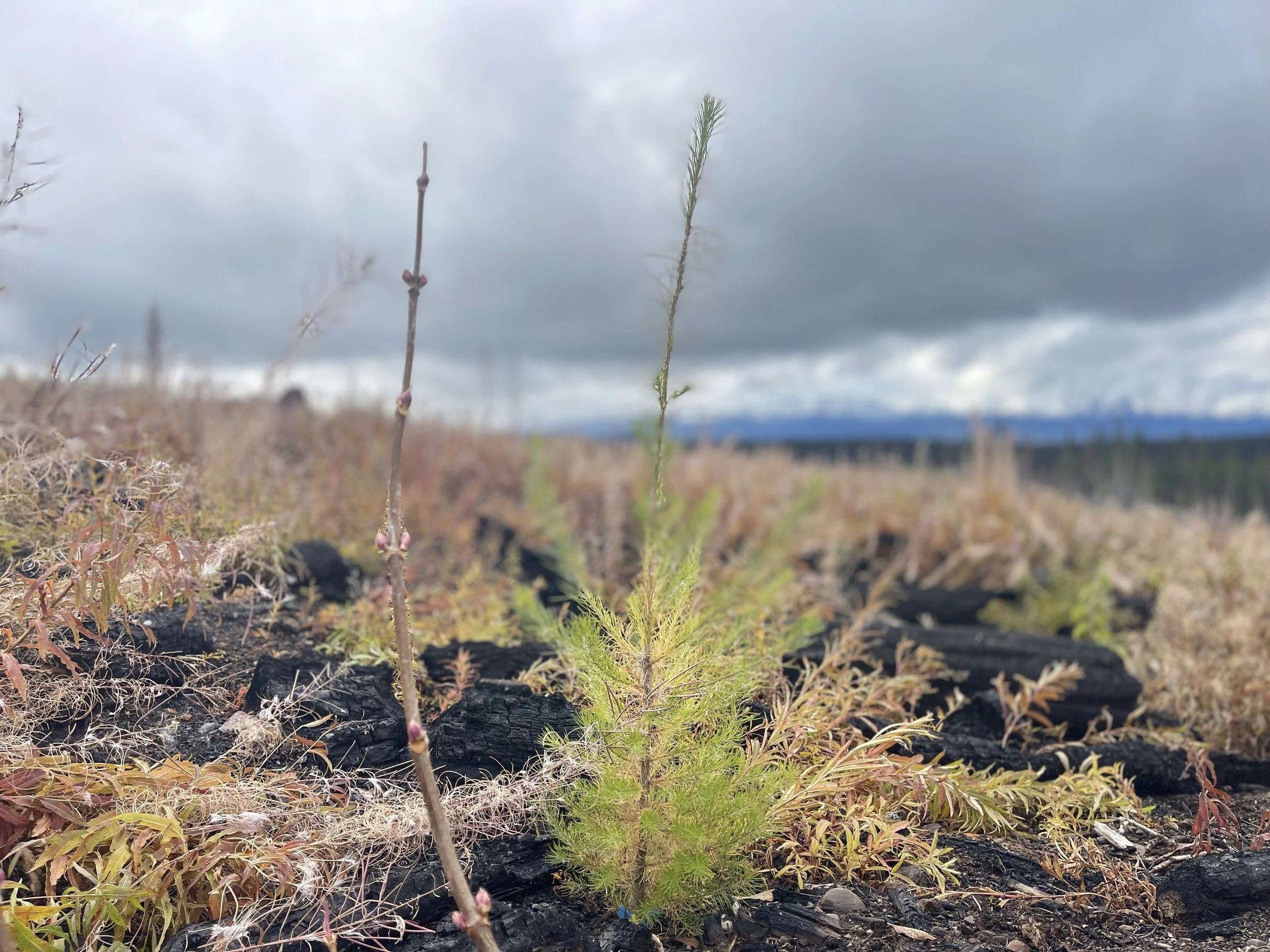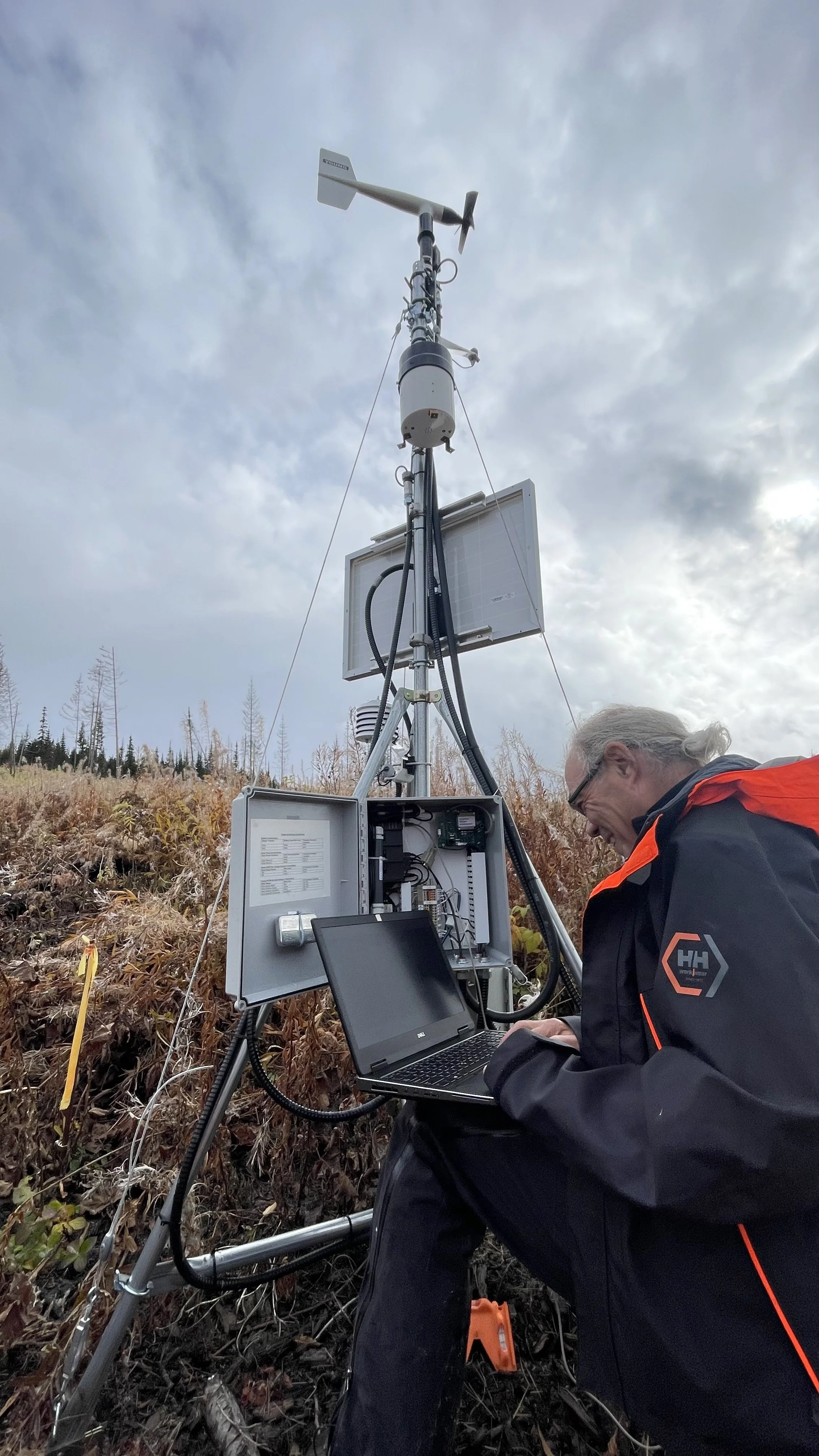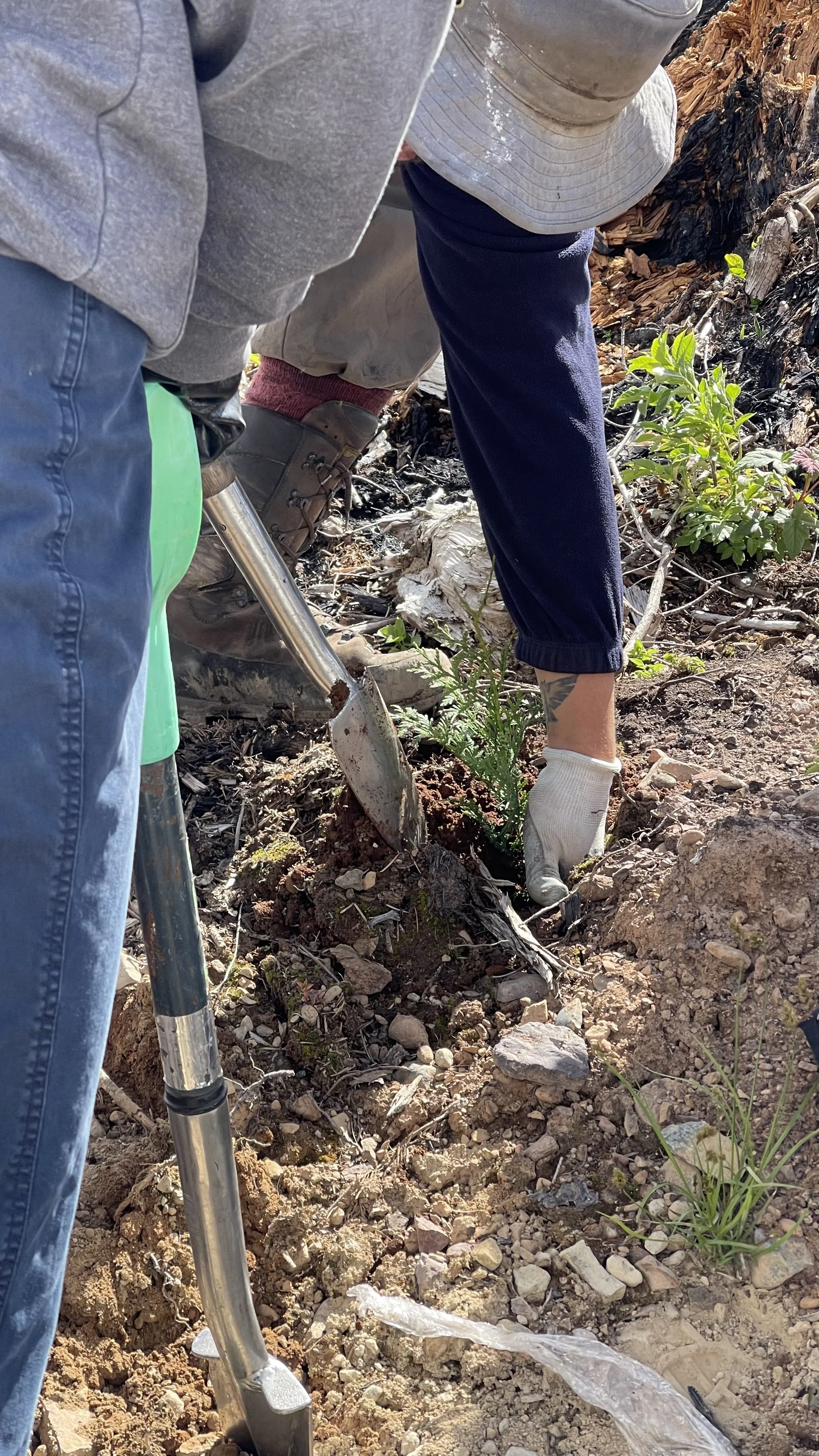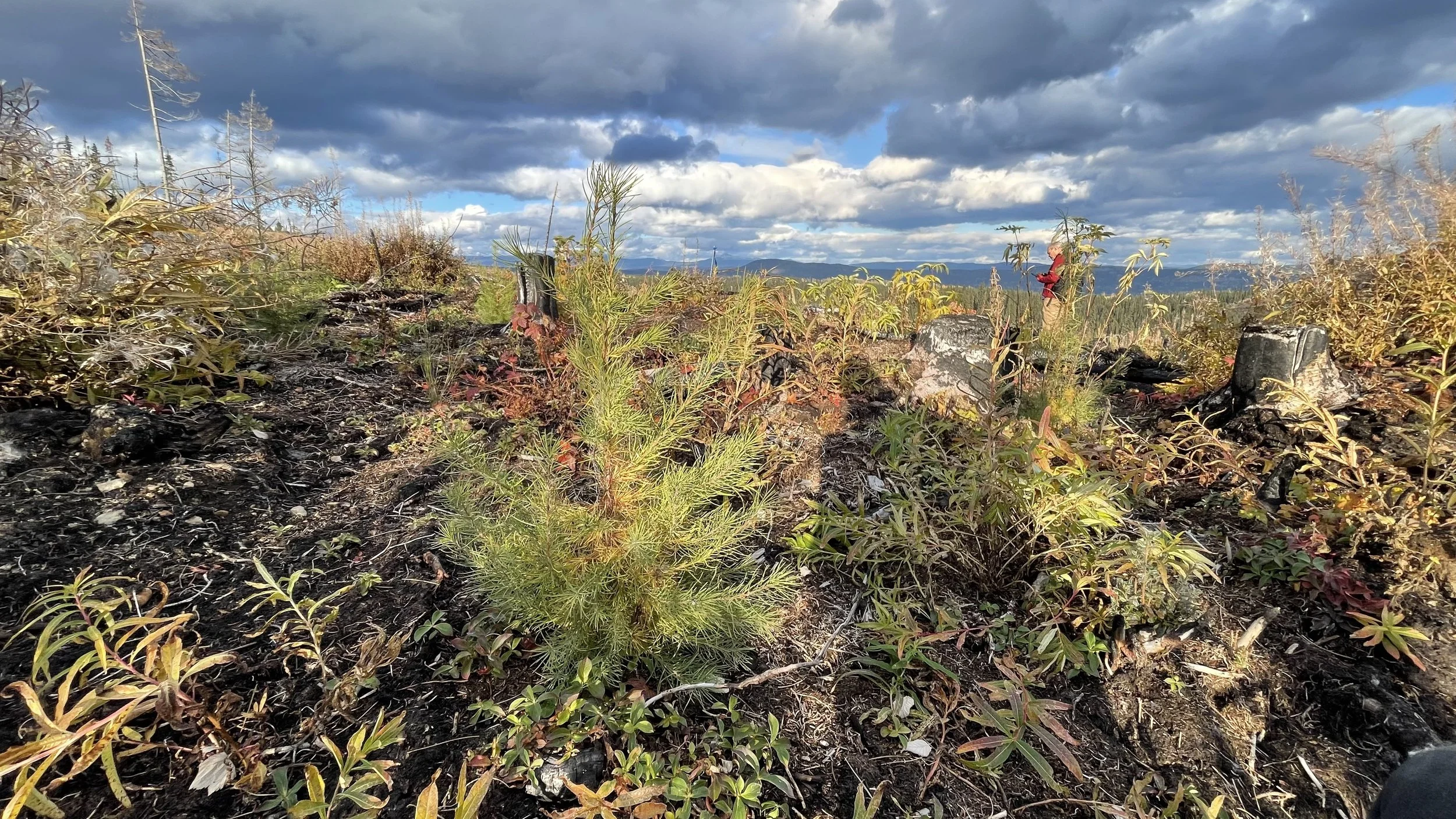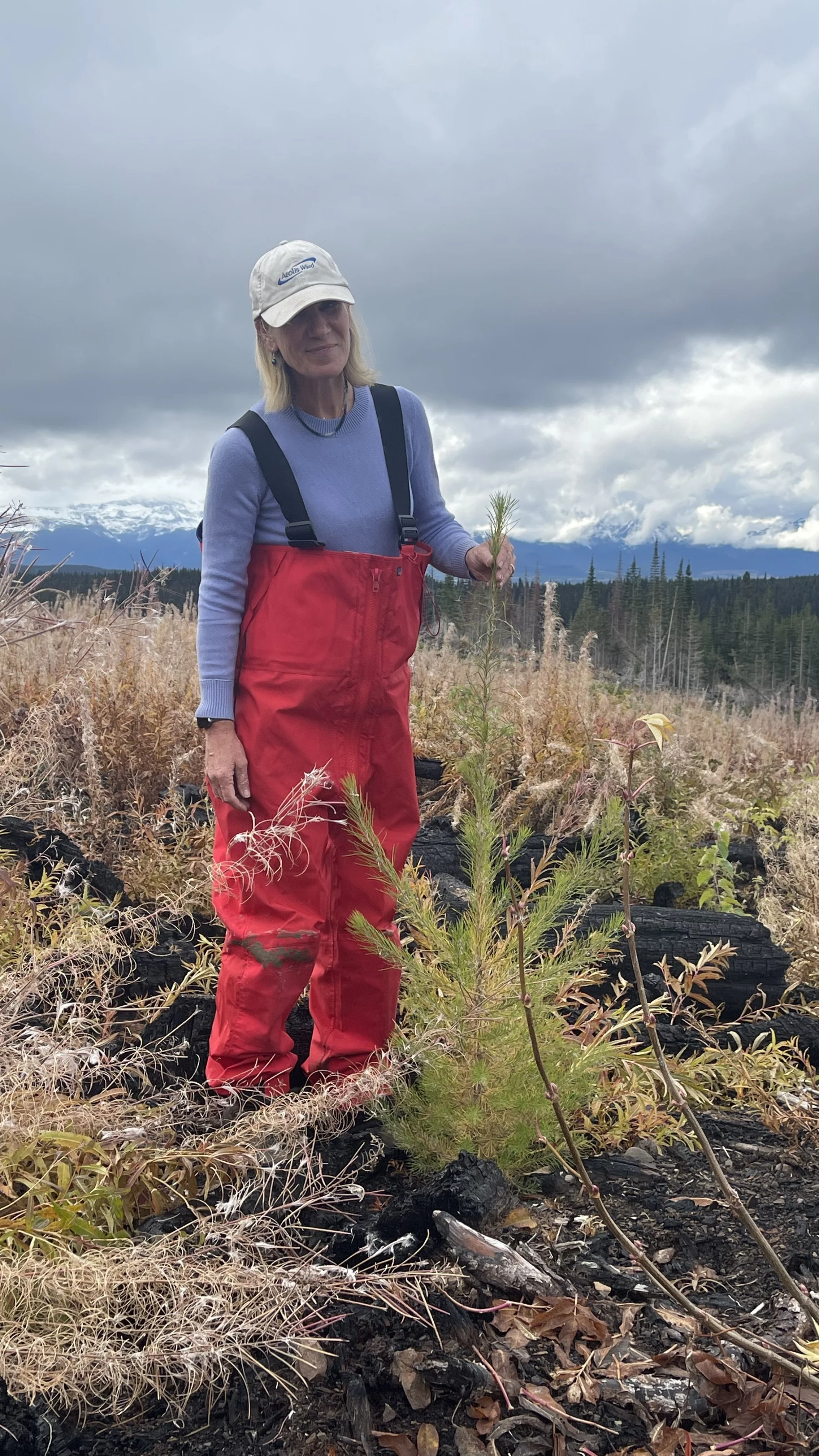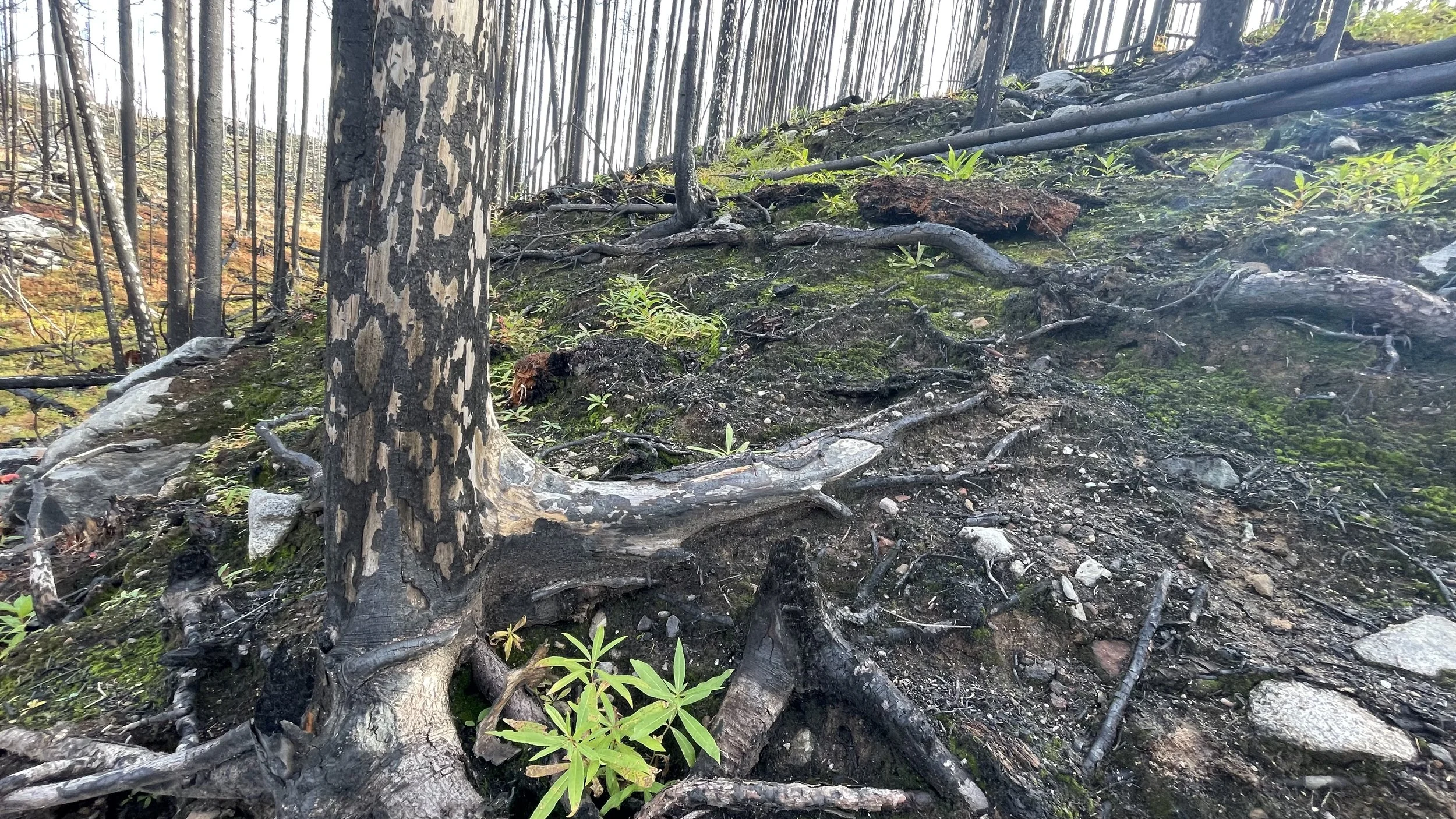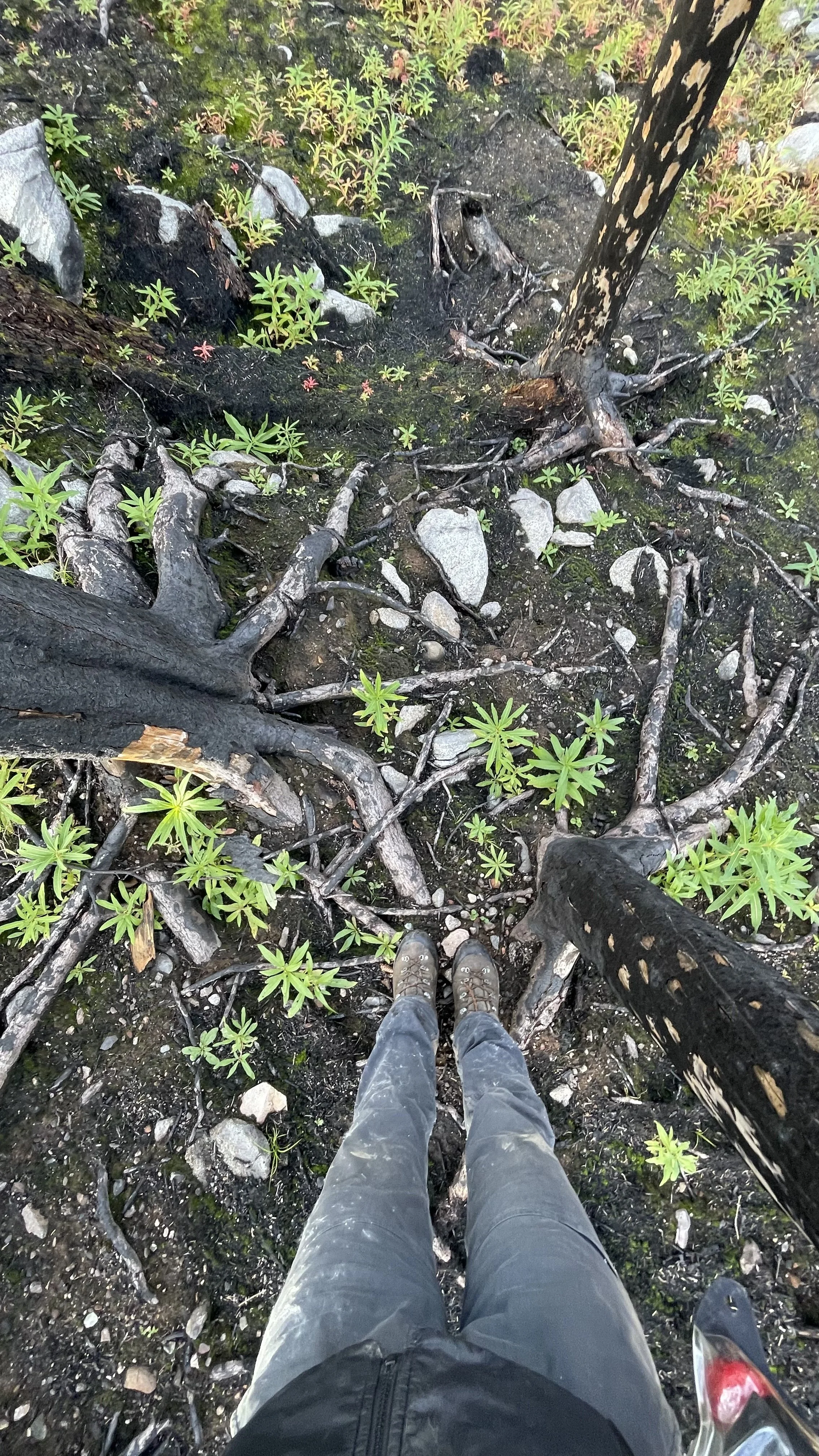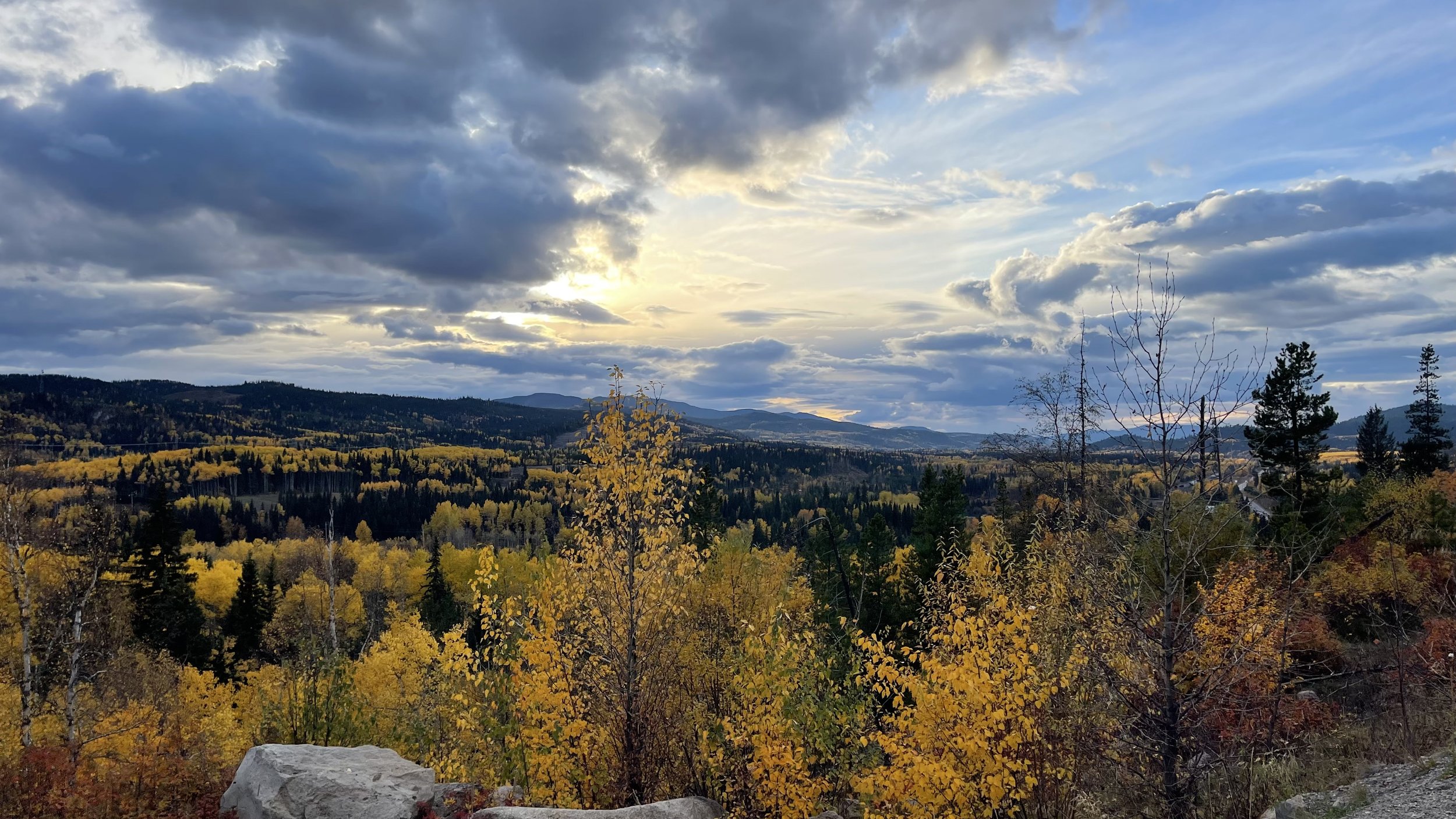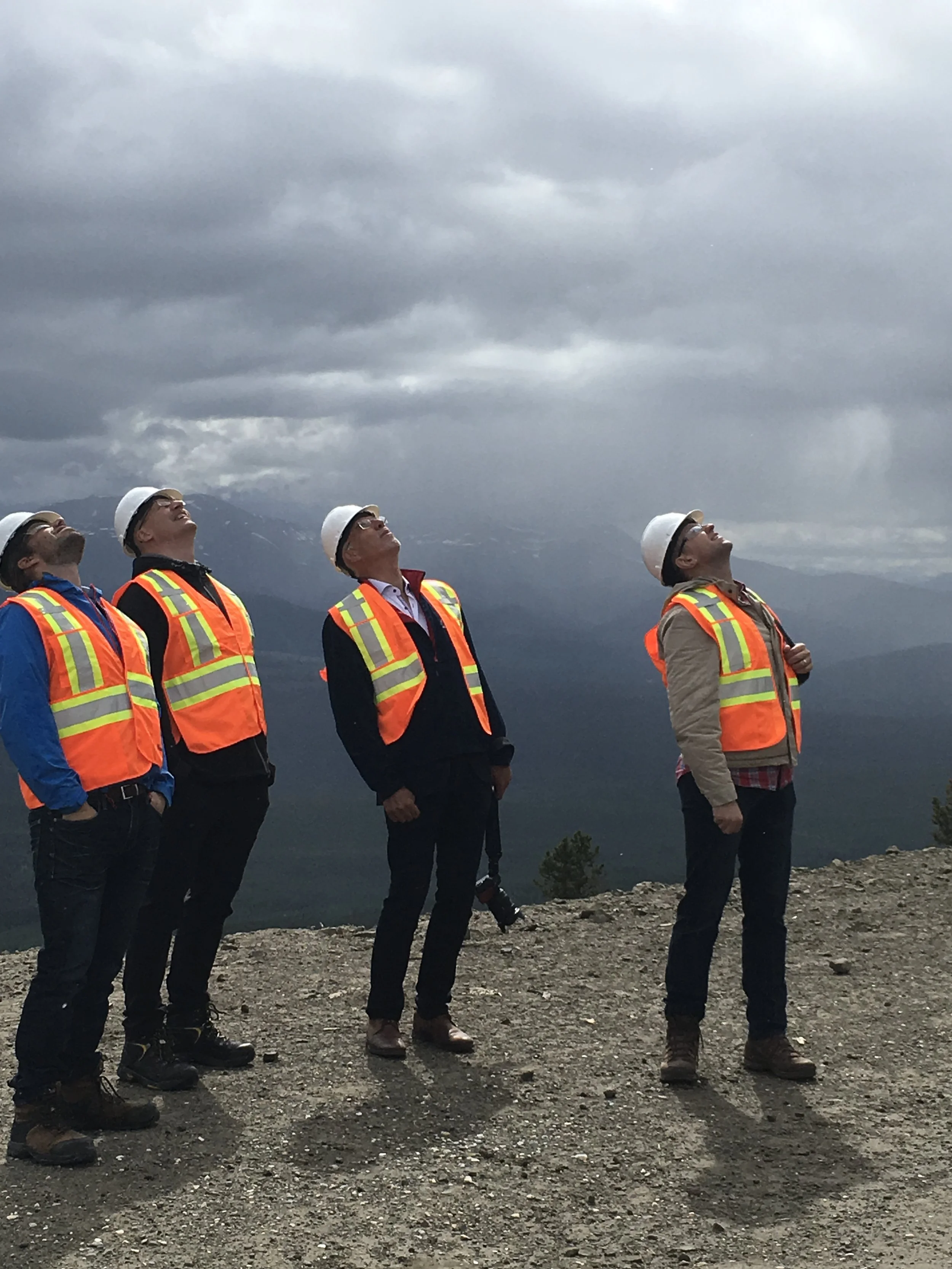
Considering climate impacts on Caribou habitat at Hackney Hills Wind, Peace Region
The projected climate impacts to British Columbia forests and other terrestrial ecosystems are documented, with most of the province experiencing changes by 2100.[i] In some cases, climate change will fundamentally and irreversibly alter ecosystems, with greater impacts at higher latitudes and higher elevations. The terrain and harsh climatic conditions at Hackney (high elevation, cold, high wind) create ridge-top, Alpine Tundra ecosystems at a lower elevation than usual in this ESSFmv4/ESSFmvp[ii] bioclimate on the eastern flank of the Northern Rocky Mountains. Alpine ecosystems in British Columbia are delineated by climatic limitations;[iii] at Hackney, these limitations result in cold-adapted, arid ecosystems that support short, slow-growing forage like lichen on open/exposed sites; and dry, conifer-lichen forests adjacent. These open, lichen ecosystems are ecologically stable under historic climate conditions but are sensitive to minor changes in environmental conditions, such as the warming and potentially increased available moisture anticipated with climate change.
Alpine ecosystems are vulnerable to small changes in environmental conditions that can be amplified through disturbance dynamics and other ecosystem interactions, to produce large changes in habitat attributes and quality. Present day climate in these Alpine ecosystems is already estimated to be outside of its historic climate envelope, and it is projected to be markedly warmer and most likely wetter by 2100.i Seemingly minor environmental changes, like the projected longer growing seasons and more growing season moisture; can interact with other factors, like intensifying disturbance regimes, and encroachment from vascular plants, to produce feedback that can result in a fundamentally different ecosystem.
For example, warmer temperatures can accelerate decomposition and promote moss or vascular plant encroachment and competition. Warmer, longer, and wetter growing seasons can see colonization by new lichen species that change surface albedo; or shift open, lichen rich areas to moss/herb/shrub dominated or tree/Krummholz occupied, that additionally reduce the light availability that is critical for lichen growth, inducing complex new feedbacks that support new vegetation.[iv],[v],[vi] The ESSFmv4/mvp is also directly exposed to the boreal fire regimes that occur to the east of the Rockies.ii Historically prone to higher disturbance than other areas of the Graham herd range in the ESSF to the west; climate change impacts at Hackney are projected to result in yet more frequent and severe wildfire in these ecosystems. Lichen is flammable and does not regenerate quickly after fire, often requiring decades to recover. Under warmer and moister conditions, mosses and other plants may colonize wildfire affected lichen sites. Ultimately, climate induced changes in temperature and precipitation can interact with and create feedback among disturbances, vegetation recovery dynamics, and microclimate; resulting in community assemblages/structure of a different nature and altering the long-term habitat trajectory of Alpine sites.
Hackney Hills is in the very southeasterly portion of the Graham herd range; on the edge of suitable terrain for the herd and facing climate impacts and increasing disturbance from the east and south. Hackney Hills is also at the most southeasterly portion of the extensive biogeoclimatic variant it occupies (ESSFmv4).iii Hackney Hills’ current condition as high value caribou habitat and its geographic position on the edge of environmental change suggest the chance that these ecosystems may transition away from their current, desirable states; and even regime shift – transformation into a different, but also stable state – that does not support caribou forage. The potential for environmental drivers to alter the habitat suitability on these ridges should be central to habitat management. The need for an active, progressive, and dynamic management approach is key to addressing climate uncertainty and ensuring ongoing habitat suitability over space and time for the Graham herd.
POTENTIAL MANAGEMENT TOOLS TO ADDRESS CLIMATE IMPACTS AT HACKNEY HILLS
· Undertake ecosystem change monitoring – monitor vegetation and microclimate to gain a better understanding of the rate of change of key Alpine vegetation communities
· Apply a landscape scale, dynamic habitat protection approach, to understand future forest conditions under climate change, ecosystem migration, and manage for habitat suitability outside of the current range
· Defend against wildfire disturbance – support wildfire protection and recovery through consideration of infrastructure activities, such as wind, that would ensure long-term protection of these sites from wildfire
· Support development opportunities that combine the maximum range of full benefits while minimizing surface disturbance; consider long term development investments with smaller environmental footprints and the potential to offset other development, mitigating cumulative effects at the landscape scale
[i] MacKenzie, W. and C. Mahony 2021. An ecological approach to climate change-informed tree species selection for reforestation. Forest Ecology and Management. Vol 481. https://www.sciencedirect.com/science/article/abs/pii/S0378112720314742?via%3Dihub
[ii] Engelmann Spruce Subalpine Fir Graham Moist Very Cold Variant (ESSFmv4) and adjacent parkland (ESSFmvp). DeLong, C, D. Tanner, M. Jull. 1994. A field guide for site identification and interpretation for the Northern Rockies portion of the Prince George Forest Region. British Columbia Ministry of Forests. http://www.for.gov.bc.ca/hfd/pubs/docs/Lmh/Lmh29.pdf
[iii] MacKenzie, W.H. 2012 Biogeoclimatic ecosystem classification of non-forested ecosystems in British Columbia. Prov. B.C., Victoria, BC. Tech. Rep. 068. http://www.for.gov.bc.ca/hfd/pubs/docs/Tr/Tr068.htm
[iv] Liming, H., W. Chen, R. H. Fraser, I. Schmelzer, A. Arsenault, S. G. Leblanc, J. Lovitt, H. P. White, S. Plante, A. Brodeur. 2024. Satellite-detected decreases in caribou lichen cover, Cladonia (Cladina) spp., over Eastern Canada during the last three decades. Forest Ecology and Management. Volume 556. https://www.sciencedirect.com/science/article/abs/pii/S0378112724000653
[v] Reinhardt, S., P. Aartsma, K. Skoyen, H. Renssen. 2022. Shrub encroachment interacts with environmental variation to reduce the albedo of alpine lichen heaths: an experimental study. Nordic Journal of Botany. Vol. 2022. Issue 3. https://doi.org/10.1111/njb.03314
[vi] Aartsma, P., J. Asplund, A. Odland, S. Reinhardt, H. Renssen 2021. Microclimatic comparison of lichen heaths and shrubs: shrubification generates atmospheric heating but subsurface cooling during the growing season. Biogeosciences, 18, 1577–1599. https://bg.copernicus.org/articles/18/1577/2021/bg-18-1577-2021.pdf
RESILIENCE AS A TACTICAL TOOL IN FORESTRY
Recent legislative updates in British Columbia have created the need to link science, policy, and forest practices in a new landscape level planning regime to address climate change.
Resulting, is a need to articulate the scientific foundations and framework to address climate change in Forest Landscape Plans (FLPs). Clarity is needed about the disciplines of ‘resilience’ and ‘vulnerability’ and related concepts; and their relevance to developing spatially explicit, multiple scale climate adaptation strategies under FLP.
This project has three purposes. First, it aims to set the scientific context; and define, elaborate, compare, and differentiate resilience, vulnerability, and related concepts in the British Columbia forestry context. Second, it provides guidance for operationalizing resilience in BC forestry. Third, we propose a means to integrate these concepts in a process of landscape level climate risk assessment that views future forest landscapes through a resilience lens.
FUTURE TRIALS - Forests Under Temporal Uncertainty: Regeneration Establishment Trials
-
Environmental context
Climate change adds a new dimension of uncertainty to tree species selection for reforestation: environmental conditions that change over time. Climate projections for British Columbia show that by 2100, much of the province will experience change affecting the presence, abundance, and distribution of tree species. Climate change is not expressing as a smooth, paced transition to a reliably predictable future. Change is being forced rapidly and/or episodically by extreme events. For example: heat domes, extreme drought, extreme atmospheric rivers; and exacerbated interactions (e.g., high rainfall events following severe wildfire; wildfire and salvage logging). Other expected oddities include high inter-annual variability and aseasonality in attributes like precipitation and temperature; a predicted state of flux in climate over at least the next rotation; and profound uncertainty about the precision and accuracy of future predictions.
-
Science & Policy
Decision makers will thus have to operationally plan (and trees will have to establish and survive) in the context of a future climate that may differ from the current; that changes over the course of the rotation; and where climate outcomes may even be uncertain.
BC government policy on tree seed transfer has evolved to address climate change adaptation strategies for reforestation. Climate Based Seed Transfer (CBST) provides the policy and scientific framework for shifting from operational deployment of seed sources based on geographic origin (GBST), to deployment based on climate. The province has also developed tree species-based climate projections (the climate change-informed species selection decision aid (CCISS). CCISS will help align CBST subzone/variant-level, climate-based genetic considerations for seed suitability; with the site-level management considerations that are needed to optimize tree species suitability.
-
Field Testing
To address this emerging decision-making paradigm, operational knowledge is needed about the establishment and early survival feasibility on novel sites, now; for tree species that have improving future climate suitability.
To provide empirical data on the operationalization of CBST and CCISS, beginning in 2017, government researchers (including Rockland Canada’s founder in their former position) have collaborated with consultants, industry, districts, BC Wildfire Service and others to realize the FUTURE Trials.
Under the leadership of Rockland Canada’s founder, approximately 300,000 climate adapted trees were planted across 25 sites in BC landscapes.

